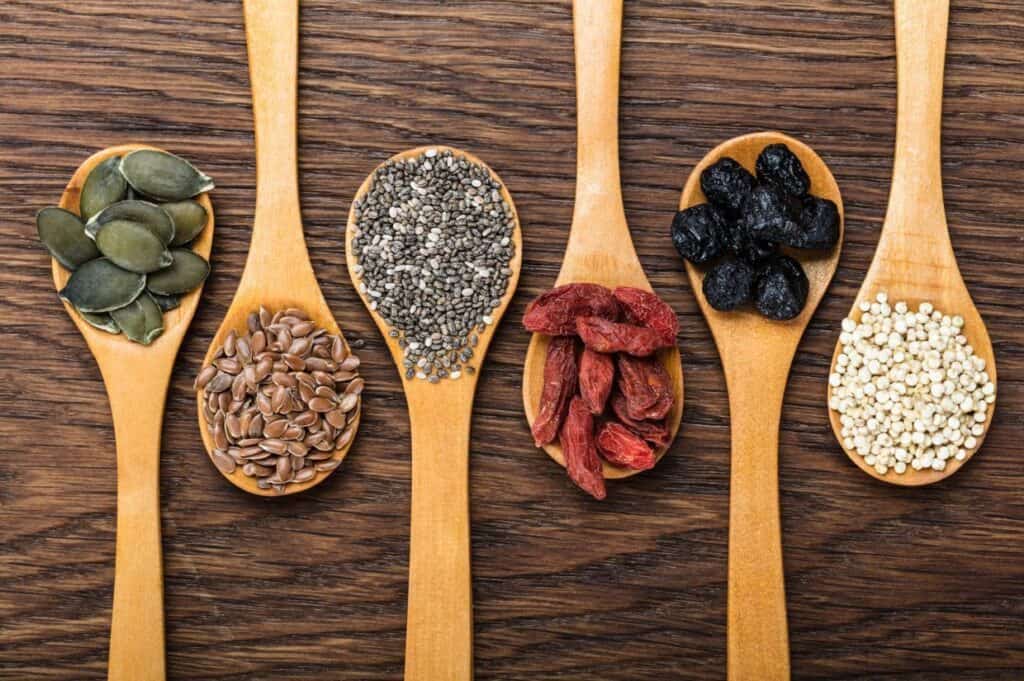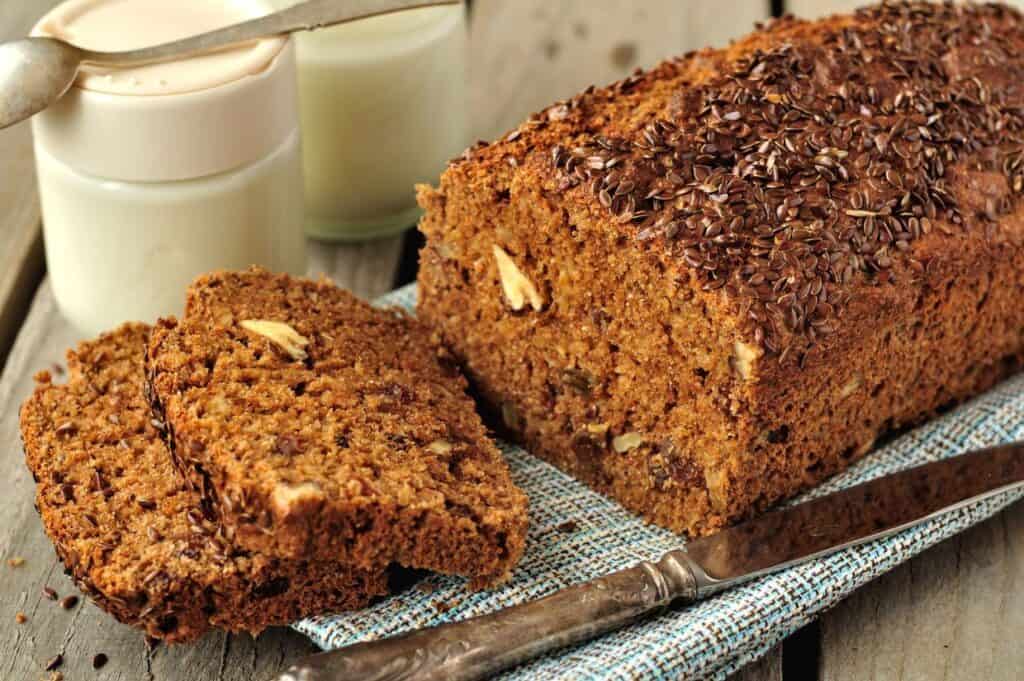When it comes to adding nutrient-rich seeds to your diet, flaxseeds and chia seeds are two popular options. These small seeds pack a punch with their unique characteristics, making them fantastic additions to many recipes.

These statements have not been evaluated by the Food and Drug Administration. Please see the disclaimer below for more information.
While they may seem similar, each has distinct features that might make one more suitable for your needs than the other. This article will guide you through the primary differences between flaxseeds and chia seeds, so you can decide which one best fits your needs.
Nutritional composition of flaxseeds and chia seeds
Flaxseeds and chia seeds are known for their nutrient density. They contain a variety of essential nutrients like fats, protein and fiber. However, their specific nutrient compositions differ slightly, which may influence your decision on which to include in your pantry.
Flaxseeds have a dense, nutty flavor and are often available in whole or ground form. Due to their dense outer shell, ground flaxseeds are commonly recommended for their ability to blend more easily into recipes like smoothies or baked goods.
Chia seeds, by contrast, have a more neutral flavor and a softer texture. This quality makes them easy to use in a variety of dishes, whether sprinkled on salads or soaked to form a gel-like consistency. They can be used whole, without the need for additional processing, making them a convenient option.
Fat content and cooking
One of the standout attributes of flaxseeds and chia seeds is their fat content. According to Healthline, flaxseeds are particularly known for their higher fat content than other seeds. This quality lends itself well to recipes that benefit from adding fats, like baked goods such as dinner rolls. Chia seeds also contain fats but are less likely to impact the texture or taste of a dish, making them suitable for recipes where a neutral ingredient is preferred, such as chia seed pudding.

Due to their fat content, storing flaxseeds properly is essential to maintain their freshness. It’s best to keep them in an airtight container in a cool place to prevent spoilage. On the other hand, chia seeds have a longer shelf life due to their natural stability, allowing them to be stored at room temperature for extended periods.
Chia seeds vs. flaxseeds: How to choose
It’s also important to consider how flaxseeds and chia seeds interact with other recipe ingredients. Flaxseeds can be ground and mixed with water to create a binding agent for recipes that need an egg substitute, which is great for those with egg sensitivity. This property makes them a popular choice for vegan or egg-free baking.

Chia seeds, when soaked in liquid, form a gel that can be used in a range of dishes like puddings and smoothies. Their neutral flavor profile also means they won’t overpower other flavors in your recipes.
“I use both flaxseeds and chia seeds almost every day. I add ground flaxseeds to oatmeal, smoothies, salad dressings, yogurt and more. My kids don’t even notice a change in taste, and it’s such an easy nutritional boost for my family. I make overnight oats or puddings with chia seeds. My kids don’t like the taste of chia seeds but would still eat a chia seed pudding with lots of berries and dried fruits.”
— Tamara Tsaturyan, Thriving In Parenting
Practicality and storage considerations
Ease of use and storage are essential factors to consider when choosing between these two seeds. Flaxseeds need to be ground for many culinary applications and require refrigeration to keep them fresh. Chia seeds might be more convenient if you want a more low-maintenance option. They can be stored at room temperature and used whole, making them an easy addition to a busy lifestyle.
Making a decision based on texture and flavor
While both seeds have relatively mild flavors, they can still influence the taste and texture of your dishes. Flaxseeds, with their slightly nutty taste, are a great addition to recipes where a hint of earthiness is desired. They blend well with baked goods, cereals and even savory dishes like soups or casseroles.
Chia seeds, in contrast, have a more neutral taste. This quality, combined with their ability to absorb liquid and create a gel-like texture, makes them a go-to ingredient for thickening recipes or creating new textures. They are a great option in vegan and raw food recipes due to their versatility and ease of use.
The final decision
Deciding between flaxseeds and chia seeds often depends on personal preference and how you plan to use them in your diet. If you are looking for an ingredient that can serve as a binding agent, add a nutty flavor or be used in baking, flaxseeds might be the ideal choice. They are particularly well-suited to recipes that call for ground seeds, as their dense outer shell needs to be broken down for the best results.
If convenience and ease of use are your main considerations, chia seeds could be the better option. Their neutral flavor and ability to be used whole make them a simple addition to a variety of dishes. Additionally, their unique gelling property means they can thicken recipes or create new textures without altering the flavor profile.
Ultimately, there is no clear winner when comparing flaxseeds to chia seeds. Each has its own strengths and can bring unique benefits to your culinary creations. Whether you prioritize taste, texture or versatility, understanding the unique attributes of each seed will help you make an informed decision. Whichever seed you choose, incorporating either flaxseeds or chia seeds into your diet can elevate your cooking and provide additional variety in your meals.
Trina Krug, MS, CDSP is a holistic nutritionist, recipe creator and advocate for human health. Her passion for low-carb lifestyles, gluten-free eating and real nutrition education has led to the creation of Trina Krug. She spends her time creating recipes, hanging out with her family on her farm and actively working on her Doctor of Science in Integrative Health.
Disclaimer: These statements have not been evaluated by the Food and Drug Administration. The contents of this article, made available via Food Drink Life, are for informational purposes only and do not constitute medical advice. The Content presented here is not intended to be a substitute for professional medical advice, diagnosis, or treatment. Always seek the advice of a qualified healthcare provider with any questions you may have regarding a medical condition or dietary changes. Reliance on any information provided by this article is solely at your own risk.